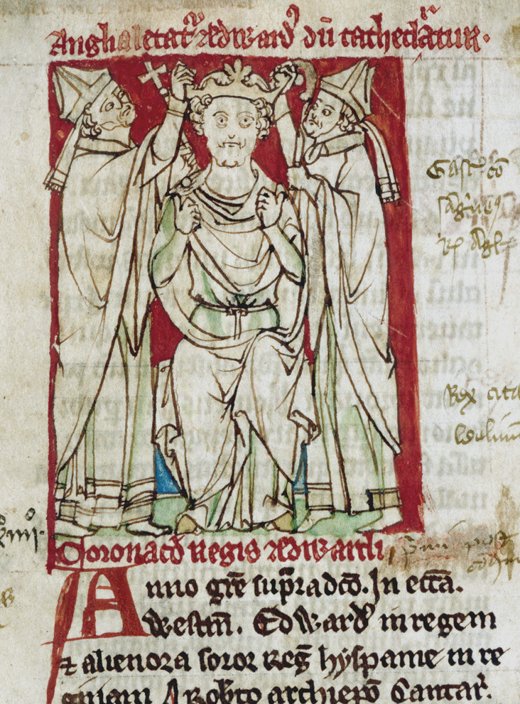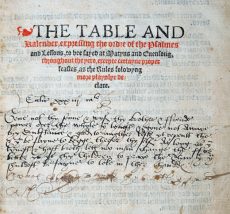- About
- Visiting
- What’s On
- Venue hire
- Catalogues
- Collections
- 101 Treasures of Chetham’s
- Digital Resources
- The Flowers of Histories
- A Book of Hours from France
- The Manchester Scrapbook
- Thomas Barritt of Manchester
- Art Treasures Examiner of 1857
- Manchester Association for Constitutional Order
- The North Western Museum of Science and Industry: Some Reminiscences by Richard Hills
- Criminal Manchester
- The Cup of Destiny
- Athenaeum Souvenir
- Middle English Manuscripts
- Manchester and Liverpool of Today
- Hollingworth’s Mancuniensis
- Memoir of Cecil Wray
- William Seward’s Diary
- The Anti-Monopolist
- Fishwick’s History of Rochdale
- Knyvett’s Defence of this Realm
- Tractatus de Nigromantia
- Axon Ballads
- Printed Books & Ephemera
- Archives & Manuscripts
- Prints and Photographs
- Blog
- Support us
Flores Historiarum
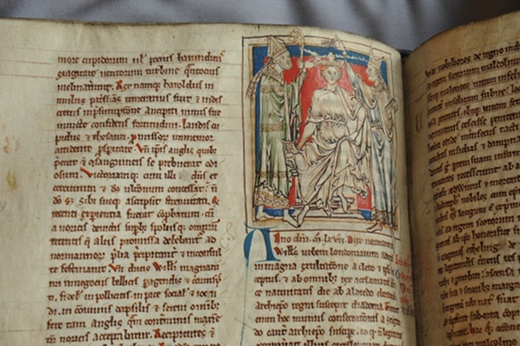
Probably the most significant medieval manuscript at Chetham’s is the Flores Historiarum, a universal chronicle the bulk of the text of which was compiled, composed and written at the royal abbey of St Albans. The abbey was a royal foundation already ancient by the mid-thirteenth century, when the majority of this MS was being written out, and was often the place of residence of the peripatetic court of Henry III. While most great Benedictine houses produced a historiographical tradition, that of St Albans had the greatest continuity of effort over the centuries and produced some of the most important contemporary historical witnesses to the reigns of many English kings. Matthew Paris, who was responsible for the production of the bulk of the Chetham’s MS, was one of the most prolific of these historians, and was also a hagiographer of note. As historians still do, he built on the work of former generations of St Albans monks, and of earlier Benedictines such as Bede. The handwriting of the text of the central portion of the work has been identified as being that of Matthew Paris himself, the earlier portions perhaps written at St Albans or Westminster, and the later continuations that bring the book up to the events of 1326 are all or chiefly the work of Westminster scribes.

The only important illustrations in the work are ten coronation scenes, beginning with a double-width scene of the coronation of Edward the Confessor, in honour of whom Henry III had rebuilt Westminster Abbey in the shape we now see it, making it then as now the royal abbey par excellence. The illustrations are done in pen and wash rather than in illuminators’ pigments, but are (the later addition of Edward I perhaps excepted) carried out with skill and are often reproduced in modern works.
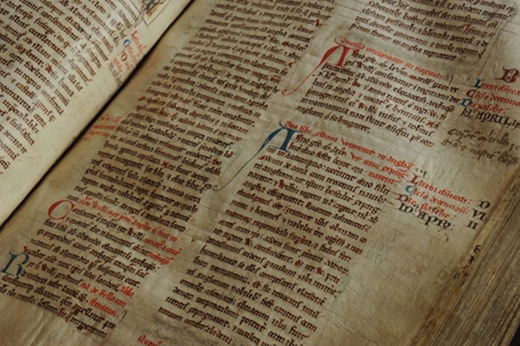
The text of Flores Historiarum thus represents the work of generations of former chroniclers, although it depends for its title on one of Matthew’s predecessors, Roger of Wendover, and summarises and epitomises Matthew’s own greatest work, the Chronica Majora. It is this epitomising that perhaps led Matthew to draw on the title ‘Flowers of Histories.’ Summary and epitome though it may be, as a universal chronicle there was an obligation to cover all history from the creation until the writer’s own day and, although Matthew assures us that the intention is that ‘the devoted reader may gain much from these brevities,’ the brevities themselves fill three large volumes in the standard printed edition of the text prepared for the Rolls Series by H.R. Luard in the 1890s.
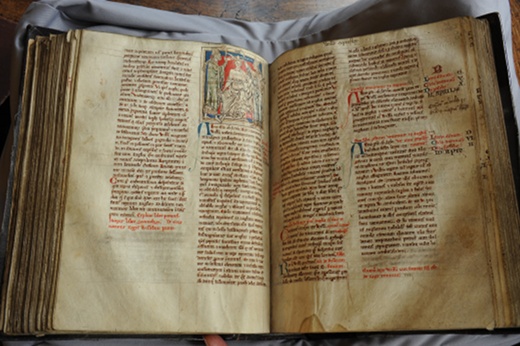
The historical coverage of the Flores Historiarum was continued into the reigns of Edward I and Edward II at Westminster, where the MS gained its many ownership marks placed throughout the book by Westminster Abbey’s monks, and where that part of the history often takes on a critical, even a catty and sarcastic tone, with many passages on the reign of Edward II using parodies of biblical texts to snipe at the king’s failings, pretensions and defeats. This MS is the earliest and most important representative of the text of the Flores, and as such is still an invaluable source for historians as well as an object of beauty and interest in itself.
Below: Coronation of Edward I.
